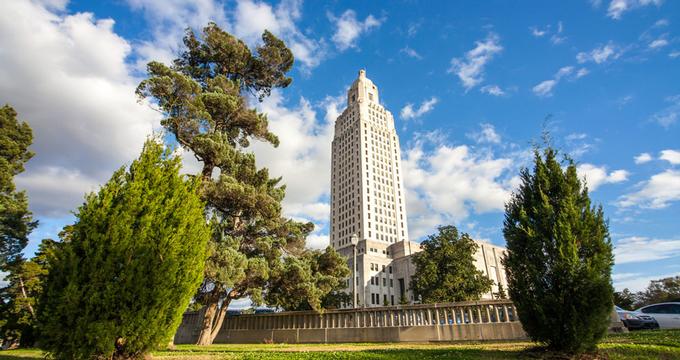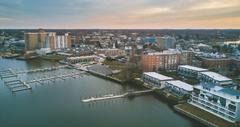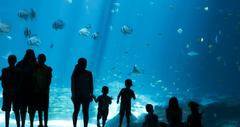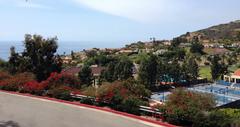The capital city of Louisiana, Baton Rouge is home to great museums, unique attractions, wedding venues and outstanding restaurants. Watch a game at the LSU Tiger Stadium, visit the LSU Museum of Art, and see a planetarium show at the Louisiana Art & Science Museum. Best historic things to do in Baton Rouge include the LSU Rural Life Museum, USS Kidd and the Old Arsenal Museum.
1. LSU Museum of Art
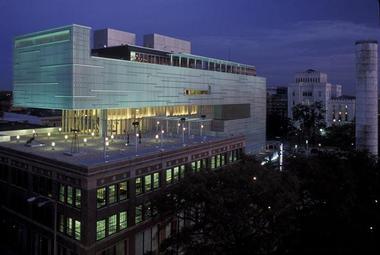
© LSU Museum of Art
The LSU Museum of Art, located on the fifth floor of the Shaw Center for the Arts, is spread across 13,000 square feet of space in fourteen galleries and is one of the top attractions in Baton Rouge, Louisiana.
This magnificent modern space has soaring fifteen foot high ceilings and can accommodate artworks in all sizes and media. The museum has one of the largest collections of art in the South. It features a number of collections such as Chinese jade carvings, several works of Clementine Hunter, Newcomb College Pottery pieces, and so much more. Local and regional artists offer some of their art pieces for sale in the museum’s store.
It is a great place to buy a unique gift and support local artists. The museum also has a number of adult, family, and kids programs and activities.
100 Lafayette Street, Baton Rouge, Louisiana, Phone: 225-389-7200
2. Louisiana's Old State Capitol

© Courtesy of Siegfried Schnepf - Fotolia.com
Located on North Boulevard, Louisiana’s Old State Capitol is a historic building that was the home of the Louisiana State Legislature from the mid 19th century until the 1930s when the current capitol building was constructed.
The Old State Capitol building stands on a bluff overlooking the Mississippi River and was built in the Gothic style. It is known by several nicknames, including the Castle of Baton Rouge and the Castle on the River and is one of the best things to do in Baton Rouge, Louisiana.
Listed on the U.S. National Register of Historic Places and as a U.S. National Historic Landmark, the building is now called the Museum of Political History, and it is an educational resource containing art objects, artifacts, documents, and much more.
100 North Boulevard, Baton Rouge, Louisiana, Phone: 225-342-0500
3. Louisiana State Museum, Baton Rouge
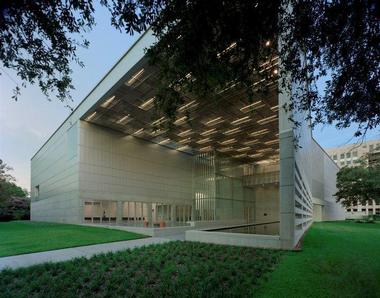
© Louisiana State Museum
The Louisiana State Museum is made up of nine museums, including the Capitol Park Museum located on North Fourth Street on the mall of Louisiana’s State Capitol in Baton Rouge.
The museum contains exhibits on the culture, history, and industry of Louisiana. There are two permanent exhibits: Experiencing Louisiana: Discovering the Soul of America and Grounds for Greatness: Louisiana and the Nation.
The exhibits cover a wide variety of topics such as slavery, the civil war, and the fight for civil liberties during the 1953 Baton Rouge bus boycott. They also touch on industries such as sugar cane, oil, and shrimp, and among others.
660 North Fourth Street, Baton Rouge, Louisiana, Phone: 225-342-5428
4. Louisiana Art & Science Museum
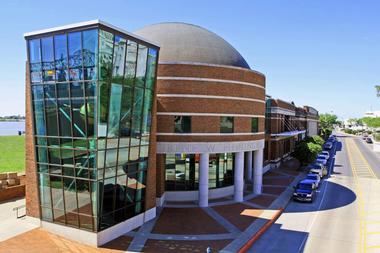
© Louisiana Art & Science Museum
Located on South River Road, the Louisiana Art & Science Museum consists of art galleries, science galleries, and a planetarium. Housed in a historic 1925 railway station, the museum seeks to educate and entertain visitors of all ages. In addition to its permanent collection of fine art, the museum also mounts temporary revolving art exhibits.
With its ancient artifacts and exceptionally interesting mummy, the Ancient Egypt Gallery is quite a popular exhibit. If you are wondering what to see in Baton Rouge, Louisiana with kids, this is a great place to visit. The Irene W. Pennington Planetarium serves several purposes: in addition to presenting its sky shows, it is also the venue for films and music shows. The museum’s educational programs include classes, lectures and workshops.
100 South River Road, Baton Rouge, Louisiana, Phone: 225-344-5272
You are reading "What to Do in Baton Rouge, Louisiana Today" Back to Top
5. LSU Tiger Stadium, Baton Rouge

© Courtesy of Leo Lintang - Fotolia.com
The LSU Tiger Stadium is an outdoor stadium located on West Stadium Drive on the campus of Louisiana State University. Known as “Death Valley,” it is the home of the Louisiana State University Tigers football team.
Before 1924, games were held at State Field on the old LSU campus, but the new Tiger Stadium opened in 1924 with a capacity of 12,000 spectators. Since then, several renovations have increased the capacity to 102,321 making the LSU Tiger Stadium the ninth largest stadium in the world.
The stadium features 27 x 80 HD video boards that were added in 2009, the 8,000 square foot Jeff Boss Locker Room, and the LSU Strength and Conditioning Facility.
West Stadium Drive, Baton Rouge, Louisiana, Phone: 225-578-2184
6. Mike the Tiger Habitat
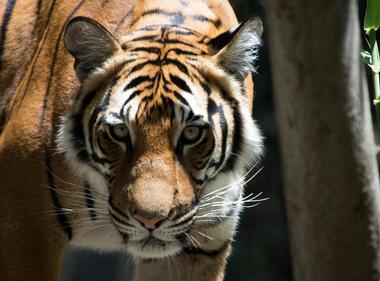
© Courtesy of _cynthiag - Fotolia.com
Located on North Stadium Road, the Mike the Tiger Habitat is the residence of Louisiana State University’s official mascot and one of the top things to see in Baton Rouge, Louisiana. The original tiger, Mike I, lived in a small 2,000 square foot enclosure beginning in the 1930s until Mike I passed away in 1956. A new habitat was constructed in 2005. It is 15,000 square feet in size.
Whereas the original habitat was simple and only had logs for Mike I to climb over, the new habitat includes a waterfall and a stream that flows into a pond, many plants, and rocks for the new Mike to enjoy. The habitat’s backdrop is an Italianate tower that is in keeping with the architecture of LSU.
North Stadium Road, Baton Rouge, Louisiana, Phone: 225-578-4823
7. LSU Rural Life Museum
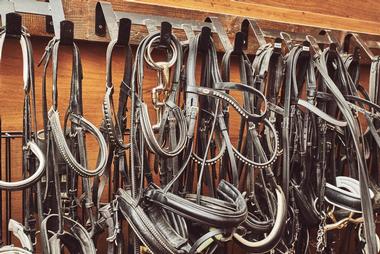
© Courtesy of nazarovsergey - Fotolia.com
The LSU Rural Life Museum is a history museum located on Essen Lane in Baton Rouge. Operated by the Louisiana State University, the museum is located on the 40-acre Burden Plantation and consists of 30 historic buildings.
The museum preserves and presents rural life in Louisiana and the Lower Mississippi Valley during the 18th and 19th centuries through its artifacts, exhibits, and tours. It is an open air museum with the largest collection of local Louisiana architecture and cultural and historical objects.
The museum offers many opportunities for educational experiences and is associated with several schools and universities. The museum is open every day.
4560 Essen Lane, Baton Rouge, Louisiana, Phone: 225-765-2437
8. USS Kidd

© Courtesy of Siegfried Schnepf - Fotolia.com
The USS Kidd is a Fletcher-class destroyer that was launched in 1943. Nicknamed the “Pirate of the Pacific,” it was named after Rear Admiral Isaac C. Kidd who died on board the USS Arizona during the attack on Pearl Harbor on December 7, 1941.
The USS Kidd saw many battles on the Pacific during World War II and was decommissioned in 1946 only to be re-commissioned in 1951 for use during the Korean War. Decommissioned again, this time in 1964, the USS Kidd was selected as a memorial for World War II veterans from Louisiana.
305 South River Road, Baton Rouge, Louisiana, Phone: 225-342-1942
More Louisiana destinations: Best Things to Do in New Orleans.
9. Knock Knock Children’s Museum
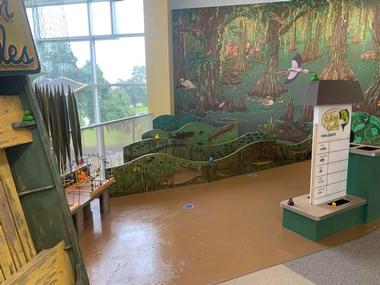
© Knock Knock Children’s Museum
For families with young children, one of the best places to visit in Baton Rouge is the 26,000 square foot Knock Knock Children’s Museum. Located at the top of a hill, the museum features a lovely view of the City-Brookes Community Park and has worked hard to create an inclusive space for families from all walks of life to gather, learn, play, and interact with one another. Run by a private, non-profit organization, the museum features several exhibits called “Learning Zones”, which feature hands-on learning opportunities to ensure that children have fun while developing new skills like reading, writing, listening, and speaking. In addition to exhibits for basic skills, Knock Knock Museum also has Learning Zones designed specifically to help children develop an interest in STEAM (science, technology, engineering, art, and math) subjects.
1900 Dalrymple Drive, Baton Rouge, Louisiana 70808, Phone: 225-388-3090
10. Red Stick Farmers Market
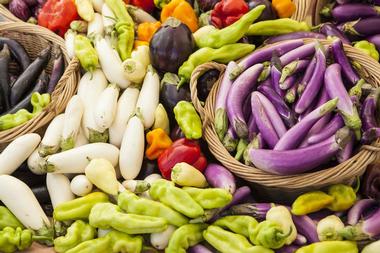
© Courtesy of Chuck Place - Fotolia.com
The days to get fresh produce in Baton Rouge are Thursdays and Saturdays, which is when the Red Stick Farmers Markets are open in various parts of the town.
Red Stick markets are open-air markets for farmers or food producers only; all products sold in the market are grown in the area by local farmers. During peak seasons, there are up to seven markets in seven different locations around Baton Rouge, making fresh local produce available to most of the city.
There are about 50 farmers who are members of the Red Sick Farmers Market, and they offer a number of different locally grown foods including fresh vegetables and fruits, seafood, meats, artisan breads, honey, homemade pies, cheese, milk, herbs, native plants, and various specialty foods such as pickles and jams.
501 Main St., Baton Rouge, Louisiana, Phone: 225-267-5060
11. Alex Box Stadium

© Courtesy of stefan wasner - Fotolia.com
Located on Nicholson Drive, the Alex Box Stadium is a baseball stadium named after Simeon Alexander Box, an LSU Tiger outfielder who was killed in action during World War II. The original stadium opened in 1938 and had a seating capacity of 2,500; this arrangement served as the baseball stadium from 1938 until 2008.
Opened in 2009, the new state-of-the-art stadium is the home of the Louisiana State University Tigers college baseball team. After several additions, the seating capacity was raised from 8,500 spectators to 10,326, and the baseball team has 6,000 square feet of locker room space and meeting rooms.
12. Louisiana State Capitol
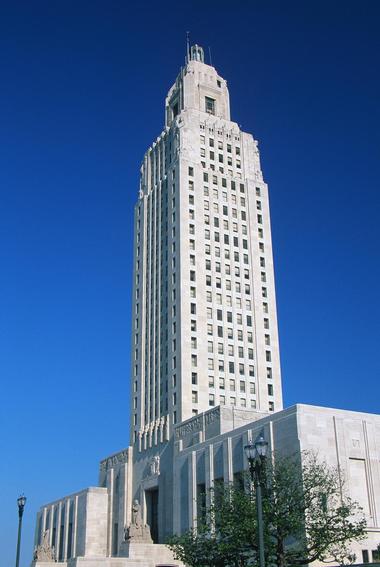
© Courtesy of spiritofamerica - Fotolia.com
The Louisiana State Capitol, located on North Third Street in downtown Baton Rouge, is the Louisiana seat of government and home of the House of Representatives, the Senate, and the Governor of Louisiana. With 34 stories and standing 450 feet high, it is the tallest state capitol building in the United States and the tallest building in the city of Baton Rouge.
Listed on the U.S. National Register of Historic Places and as a National Historic Landmark, the Art Deco building is sometimes referred to as Huey Long’s Monument because of the former governor’s efforts to get the capitol built.
900 North Third Street, Baton Rouge, LA, Phone: 225-342-7317
13. Downtown Baton Rouge
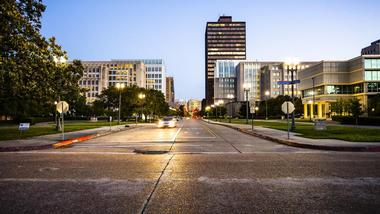
© Courtesy of Cracker Clips - Fotolia
Downtown Baton Rouge is a commercial, residential, and entertainment area located along the banks of the Mississippi River. If you are looking for date night ideas in Baton Rouge, this area rich with culture and history, and it is the home of many restaurants, shops, and entertainment venues as well as residences. Restaurants include Azteca’s Mexican Cuisine, Capital City Grill Downtown, Tsunami Sushi, and many more. There are many bars and several hotels and casinos from which to choose.
Live After Five is a successful outdoor concert series that takes place at The Crest. Eight shows are produced in the spring and eight in the fall. The concerts are free and exceedingly popular.
14. Baton Rouge Zoo

© Courtesy of photocech - Fotolia.com
The Baton Rouge Zoo is located on Thomas Road north of downtown Baton Rouge. Opened in 1970, the zoo is home to more than 1,800 animals from all around the world, including amphibians, birds, fish, mammals, reptiles, and more. If you are wondering what to do in Baton Rouge with kids, this is a great place to visit.
The zoo is involved in survival and reintroduction programs for animals like the Arabian oryx and the Guam rail.
Its Otter Pond is a replica of a cabin, and visitors can watch otters as they swim underwater. Another popular exhibit is the Parrot Paradise, a walk-through aviary, the home of many kinds of birds. The zoo has education programs for children including field trips, day camps, and much more.
3601 Thomas Road, Baton Rouge, LA, Phone: 225-775-3877
15. Things to Do in Baton Rouge: The Old Governor's Mansion
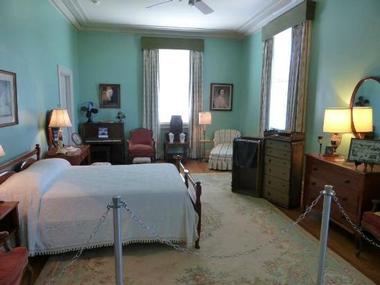
© The Old Governor's Mansion
Located on North Boulevard, the Old Governor’s Mansion was used as a residence by the governors of Louisiana between 1930 and 1963. Built during the administration of Governor Huey Long, the mansion served as the home of several Louisiana governors. Later, it housed the Louisiana Arts and Science Center Museum for many years until the mansion was reopened as a historic house museum in 1978.
Listed on the U.S. National Register of Historic Places, the mansion is open for guided tours from Tuesday through Friday; group tours are available by reservation. The mansion welcomes school field trips and is a popular venue for special events, especially weddings. More things to do in the Southern USA
502 North Boulevard, Baton Rouge, LA, Phone: 225-387-2464
16. Bluebonnet Swamp Nature Center
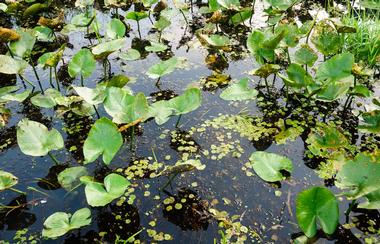
© Courtesy of Zack Frank - Fotolia.com
Bluebonnet Swamp Nature Center, located on North Oak Hills Parkway, is a large nature center with a 9,500 square foot Exhibit Building set on 103 acres of land. Within the center there are boardwalks and paths where visitors can see a variety of habitats such as forests and swamps as well as wildlife like armadillos, coyotes, deer, foxes, otters, and many other creatures.
Birdwatchers can enjoy seeing a variety of migratory birds as well as year-round residents. If you are looking for things to do in Baton Rouge today, this is a great stop. In the Exhibit Building, there are displays of live animals and mineral exhibits, and children are able to touch natural objects such as feathers, pelts, and much more.
10503 North Oak Hills Parkway, Baton Rouge, LA, Phone: 225-757-8905
More places to visit: 16 Best Things to Do in Lafayette.
You are reading "25 Best Things to Do in Baton Rouge, Louisiana" Back to Top
17. Blue Bayou Water Park and Dixie Landin'
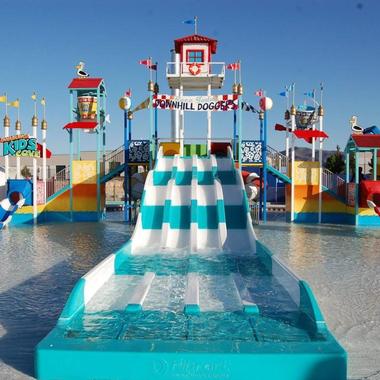
© Blue Bayou Water Park and Dixie Landin'
When it comes to having a good time, few things could be better than enjoying two incredible amusement parks, especially when they’re located right across of each other. That’s exactly what draws guests to the Blue Bayou Water Park and Dixie Landing – two of Baton Rouge’s most popular family parks. The Blue Bayou is a water park filled with tons of exciting attractions. Known as the “Land of Giants”, the Blue Bayou is home to five of the world’s largest waterslides such as the largest in-line water slide, the largest tornado slide, and the largest aqua loop in the world. Dixie Landin’ is just as exciting with 27 attractions to enjoy with family and friends. Take a ride on one of three rollercoasters, take a trip on the log floom, or scream your lungs out on the drop tower among other equally entertaining rides.
18142 Perkins Road, Baton Rouge, Louisiana, United States 70810, Phone: 225-753-3333
18. Bistro Byronz

© Bistro Byronz
Bistro Byronz is a Louisiana Bistro that comes very close to the popular bistros in Paris – it’s a cozy neighborhood eatery where locals come to hang out and enjoy their regular fare, which is usually their same favorite dish and drink, which the waiter of course already knows.
Dark colors and soft lighting make for a very pleasant atmosphere for a business lunch or a girls’ night out. Both the lunch and dinner menus are extensive, rich, and imaginative. Bistro Byronz is famous for its sandwiches and tartines, but you can also find some traditional French delights such as Cassoulet or Chicken Paillard on the menu.
Don’t miss their homemade blue cheese chips; they are addicting. Bistro Byronz serves a nice selection of craft beers and wines by the glass.
515 Mouton Street, Baton Rouge, LA 70806, Phone: 225-218-1433
19. Shaw Center for the Arts
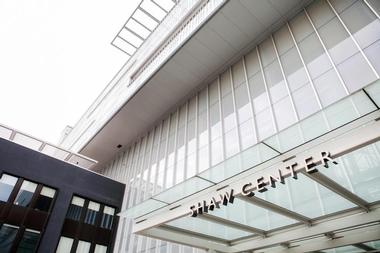
© Shaw Center for the Arts
Located on Lafayette Street, the Shaw Center for the Arts is a fine arts museum and performing arts venue that nearly covers an entire city block in downtown Baton Rouge. Opened in 2005, it is an enormous 125,000 square foot facility that is home to the 325-seat Manship Theatre, the New Venture Theatre, the Hartley-Vey Theaters, the LSU School of Art Glassell Gallery, the LSU Museum of Art, classrooms, a park, and several restaurants.
The center hosts musical performances, films, and events for children. It is also a popular place to rent for weddings and other special occasions.
100 Lafayette Street, Baton Rouge, LA, Phone: 225-389-7171
20. Oxbow Rum Distillery, Baton Rouge, LA
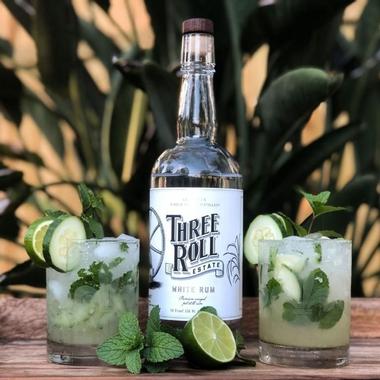
© Oxbow Rum Distillery
Smack dab in the center of Louisiana’s thriving delta is the Oxbow Rum Distillery. Known for its award-winning spirits, the Oxbow Rum Distillery has a long history of sugarcane farming and milling, which has passed from generations to generation. The distillery gets its name from the three steel rolls that the single estate distillery utilizes to crush and juice the sugarcane that they use for the distillation of their unique spirits. Oxbow Rum Distillery has seven different bottles available to sample like their signature Agricole-style Rhum, the Cachaca inspired Brazilian Rhum, and the Red Stick Cinnamon Rhum. Other options include the Spiced Rhum, the Dark Rhum, the White Rhum, and the Pure Louisiana Vodka. Tours of the distillery can also be booked ahead of time for guests who want an inside look at how these fantastic sugarcane-based alcohols are made.
760 St. Philip Street, Baton Rouge, Louisiana 70802, Phone: 225-615-8044
21. Magnolia Mound Plantation
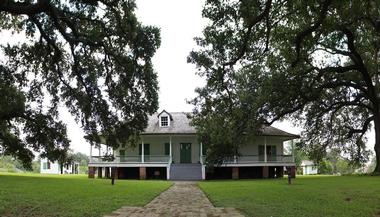
© Magnolia Mound Plantation
Located on Nicholson Drive one mile south of downtown Baton Rouge, the Magnolia Mound Plantation is a 1791 French Creole house that was originally a cottage. Built near the Mississippi River, the plantation is often referred to as Magnolia Mount in documents that date from the period.
Listed on the U.S. National Register of Historic Places, the architectural style of the plantation and its outbuildings show the influence of the West Indies and the early French settlers. The original four-room cottage was expanded in 1812 and again in the late 19th century. The city of Baton Rouge bought the 16-acre property in 1966 in order to preserve the house and the grounds.
2161 Nicholson Drive, Baton Rouge, LA, Phone: 225-343-4955
22. Mason's Grill, Baton Rouge
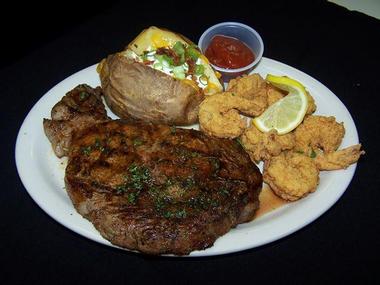
© Mason's Grill
People drive for miles for Mason’s weekend brunch. Mostly they come for bottomless champagne and the country’s best Bloody Mary, which is called Bloody Masons at this establishment. It really is the best, and a number of magazines and food reviewers have voted and agreed.
Besides large quantities of booze, their brunch offerings provide an excellent reason to visit this restaurant, even if you don’t order drinks. Several creative versions of Eggs Benedict with crabs, seafood, crawfish and lots and lots of jalapenos are the best sellers, and the thick juicy steaks prepared any way you want them are also quite popular.
This modest looking restaurant with two dining rooms fills up quickly, so if you do not like crowds, come during the week and have a good look at the menu; it is full of wondrous Cajun dishes worth exploring.
13556 Jefferson Hwy, Baton Rouge, LA, Phone: 225-756-8815
23. L'Auberge Casino and Hotel
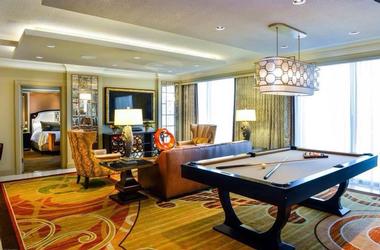
© L'Auberge Casino and Hotel
How lucky do you think you are? At the L’Auberge Casino and Hotel, visitors can find out just how much luck they actually have while enjoying an incredible weekend as one of Louisiana’s best casino resorts. L’Auberge features 75 game tables, an incredible 1,600 slot machines, and interiors that are just as luxurious as the stakes at the casino are high. Among the many sections to enjoy at the casino, one of the newest is the Lake Charles Poker Room – a decadent and lavish poker room with six playing tables and a range of poker games from No Limit Hold ‘Em to Pot Limit Omaha. Apart from the casino, the L’Auberge also has a beautiful hotel to enjoy, several dining options to satisfy any craving, and fantastic entertainment to enjoy as the 1,400-seat event center or the smaller and cozier L Bar.
777 Avenue L’Auberge, Lake Charles, Louisiana 70601, Phone: 866-355-7111
24. Walk-on's

© Walk-on's
Designed as a quintessential Irish pub, Walk-on’s is spacious, cozy, and welcoming, and it is centered around the enormous bar. Above the bar, an endless line of flat screens shows various games that are going on at the time.
The bar is quite close to LSU campus, meaning that most guests are students and Tigers fans. The place is absolutely electrifying when the Tigers are playing. Walk-on’s pays particular attention to their food – everything is made by hand and from scratch.
They specialize in Louisiana staples, hand-made burgers, stuffed potatoes, sauces, dressings, breaded fried stuff, and fun salads. Everything is made to order. They have lots of beers on tap and some really inventive and creatively named cocktails.
3838 Burbank Drive, Baton Rouge, LA, Phone: 225-757-8010
Attraction Spotlight: Baton Rouge Zoo
Located in Baton Rouge, Louisiana, the Baton Rouge Zoo is the city’s most-visited year-round family attraction, home to more than 1,800 animal species. Initial talk of developing a zoo in Baton Rouge dates back to the 1950s, when local television personality Buckskin Bill began a public campaign urging the city to look into the idea of funding a zoo, adding the tagline “Baton Rouge needs a zoo” to the end of his weekly program.
History
Conversations about the project by the city’s Recreation and Parks Commission began in 1960, although funding for the facility was not allocated until 1965, achieved in part due to a millage election spearheaded by Buckskin Bill. Construction on the zoo began in 1966, and the zoo facility was opened to the public four years later, on Easter Sunday of 1970.
Permanent Exhibits and Attractions
Today, the Baton Rouge Zoo is an accredited Association of Zoos and Aquariums zoo, the first in the state to receive the distinction. As the top family attraction in the city, the zoo is host to over 250,000 annual visitors. It is managed by East Baton Rouge Parish’s Recreation and Park Commission and houses more than 1,800 animal species from across the world.
A Safari Post Gift Shop is located at the entrance to the zoo facility, along with the Cypress Bayou Railroad Station, which departs trains every half hour that travel around the zoo’s perimeter wetlands. Tram rides are also offered with advance reservations on the Baton Rouge Zoo Tram, providing 25-minute narrated tours throughout the park’s grounds.
The park’s animal habitats are divided by continent, featuring wildlife native to Asia, Africa, South America, and Australia. In the Asian section, a Realm of the Tiger exhibit showcases Malayan and Sumatran tigers, the latter of which being the rarest subspecies of tiger in the world, with only 500 left in the wild today. Other Asian species on display include the Indian rhinoceros, the lion-tailed macaque, and the Vietnamese potbellied pig, a domesticated breed brought to the United States in the 1980s. A Water Treatment Marsh area separates the Asian and South American sections of the zoo, featuring black-necked swans, native to Brazil, Bolivia, Patagonia and the Falkland Islands, while capybaras, maned wolves, jaguars, and spectacled bears roam nearby.
Bearded dragons, blue-tongued skinks, and red kangaroo are on display in the Australian section, which is located next to the zoo’s educational department facilities. The African section of the zoo contains roaming areas for Plains zebras, cheetahs, bongos, and Nubian ibexes. Two nearby bird exhibits, a Parrot Paradise and a Birds of Prey area, serve as walkthrough aviaries allowing free flight for a variety of winged species, and the Birds of the World exhibit showcases diverse species such as the East African crowned crane, the sacred ibis, and the kookaburra. An Otter Pond features a replicated fishing cabin that serves as a platform for visitors to view otters in their natural underwater habitat, and the L’aquarium de Louisiana exhibit features reptile, fish, and amphibian species native to the Louisiana area.
A KidsZoo area features a Safari Playground and a seasonal concession stand, the Cool Critters Cafe. The zoo’s main dining facility, the Flamingo Cafe, is open every day, serving a variety of American fare, and other vending machines and food stands are provided throughout the park for quick snacks. While the zoo does not provide public picnic areas, visitors may use picnic facilities at the nearby Greenwood Park, located along the zoo’s northern border.
Ongoing Programs and Education
Several daily wildlife shows are presented at the zoo, including a twice-daily Otter Chat at the Otter Pond, a Wildlife Safari Show presented at the zoo’s amphitheater on weekends, and a nightly Running of the Ducks at the KidsZoo area, held one hour before the zoo’s daily closing. Field trips for K-12 students are offered, incorporating Louisiana curriculum standards, and family-friendly Twilight Tours by tram are hosted weekly throughout the summer. Safari Night programs offer visitors ages five and up the chance to spend the night at the zoo and include live animal encounters and a ride on the Cypress Bayou Railroad. A Zoo-and-Me Morning program allows preschoolers to explore the zoo with their families, featuring hands-on animal-themed projects and activities, and a Zoo Krewe program gives teens the chance to volunteer at the zoo, working directly with animal care.
As an accredited zoo, the Baton Rouge Zoo is committed to species conservation efforts and has dedicated resources to more than 30 survival plans for threatened and endangered species. Its programs working with the Arabian oryx, Guam rail, and golden lion tamarin have successfully reintroduced animals into their natural habitats in the wild. Other species conservation efforts include work with cheetahs, tigers, Baird’s tapirs, and Asian and African elephants.
3601 Thomas Rd, Baton Rouge, LA 70807, Phone: 225-775-3877
You are reading "25 Best Things to Do in Baton Rouge, Louisiana " Back to Top
Attraction Spotlight: LSU Museum of Art
The Louisiana State University Museum of Art was founded in 1959, and since opening its doors to the public in 1962, it has become a thriving part of the Baton Rouge community. The museum consists of over 13,000 square feetand consists of fourteen galleries housing six permanent collections. The museum receives approximately 20,000 visitors annually and is very involved with community outreach programs.
The LSU Museum of Art houses one of the largest university-affiliated art collections in the southern United States, estimated at over 6,000 objects. These exhibitions range from local and regional Louisiana art to European and American sculpture, portraiture, and photography. There is even an outstanding Chinese jade collection and Japanese works on paper. The museum is vital to the preservation of the art and culture of Louisiana, especially since it is the only dedicated art museum in the city of Baton Rouge.
In 2005, the Museum of Art relocated to the fifth floor of the Shaw Center of the Arts in historic downtown Baton Rouge. The building, which used to be a parking garage known as the “auto hotel,” has undergone quite a bit of esthetic improvements, ultimately becoming a piece of art in and of itself. The most notable improvement is the large white addition to the building that appears to hover above the original parking garage structure. It consists of hundreds of translucent glass sections that sparkle in the reflection of the sun-soaked Mississippi River during the day and appears to glow like a lantern at night. This has earned the Shaw Center for the Arts a nickname amongs locals: The Lantern on the Levee.
This simultaneously historic and contemporary building provides the ideal setting for the Louisiana State University Museum of Art to pursue its mission of enriching and inspiring the minds of all who visit it.
The LSU Museum of Art Permanent Collections
The Museum has six permanent collections, five of which are divided by medium: painting, sculpture, works on paper, photography, and decorative arts. The sixth permanent collection,which has recently been reinstated, is entitled Art in Louisiana: Views into the Collection. This collection is the current highlight of the museum and focuses solely on the local art and culture of Louisiana.
The LSU Museum of Art is known for its prominent collection of American and European oil on canvas portraiture. The majority of the paintings are from early 19th century American artists, but some items in the collection date back to the mid-14th century. The portraits are traditional and depict members of high society during the time. There are also landscapes from the 19th century in the collection, ranging from the classic to the abstract.
The museum also houses some of the most fascinating and diverse pieces of sculpture. For the most part, the pieces on display are from the 20th century and were created from a wide variety of substances. From heavier metals like steel and cast aluminum to porcelain,wood, and even blown glass, there is endless ingenuity to be found in the museum’s sculpture collection.
A large collection of American, European, and Japanese works on paper are also on display. This collection includes: woodblock print, black lithograph, sumi-e ink, etchings, engravings, and even collages. These works range in style from urban landscape to Japanese woodblock portraiture. Local artist Caroline Wogan Durieux donated one of herprized works entitled Bourbon Street, New Orleans. It was created with black lithograph and is a bold visual of two African-American singers in a jazz club on Bourbon Street. The piece captures the unique musical culture of New Orleans and its locals in the 1940s.
The photography collection at the museum mainly focuses on local landmarks and events. Most of the photographs are from American photographers from the turn of the century. From landscapes depicting the majestic Mississippi River to candid shots of vibrant Mardi Gras parades, the culture of Louisiana comes to life in this collection.
You are reading "25 Best Things to Do in Baton Rouge, Louisiana " Back to Top
The decorative arts collections contain various works of porcelain, clay, fabric, and glass. Extravagant vases, pitchers, and gold-embellished mantel pieces make up the majority of the collection. This collection is one of the most comprehensive in the Southern United States. It also contains pieces from the newest reinstallation of the museum’s prized collection: Art in Louisiana: Views into the Collection.
As of March 2016, the museum has permanently returned its world-class collection, Art in Louisiana: Views into the Collection.It has been more than 10 years since the collection has been open to the public for viewing. The collection is focused around the unique culture and history of Louisiana and its locals.It contains some of the best decorative arts that Louisiana has to offer, with some pieces from as early as the 1700s. It occupies seven of the museum’s fourteen galleries (over 8000 square feet), with each gallery revolving around a different theme. Each and every piece in the collection has a rich story describing how it impacted Louisiana’s history.
Guest curators with specialized expertise worked with the museum upon the return of the collection in order to put the works into a fresh perspective and global context. The curators worked with each of the seven galleries individually to ensure a dynamic and diverse experience.
Besides highlighting local culture and history, there are two more initiatives that the museum is pursuing: to transform the museum into an art lover’s paradise and to build a larger, more comprehensive educational department at the university. This includes generating more community programs, university curriculum, and gallery tours.
Ongoing Programs & Education
The university and the museum have a thriving relationship with local elementary and middle schools, which helps continue vital art education. LSU and the museum are dedicated to art education and advancement in the local community and beyond.
Through creative programs and experiences such as ArtWorks, local youth can receive free opportunities to explore their creativity and grow as individuals. This program differs from typical field trip experiences because it is based on a long-term model. It tracks the students’ educational, social, and emotional development all the way through elementary school.
The museum also offers customizable field trips so teachers can tailor their students’ educational experience. The museum encourages university groups to utilize the galleries for academic discussions and growth as well.
The Neighborhood Arts Project is the museum’s largest community outreach program. It provides meaningful experiences to underprivileged communities where citizens may not have access to summer camps or after-school programs. The Neighborhood Arts Project and its dedicated volunteers, bringing valuable artistic and educational experiences into the community. The children and their families who benefit from these programs lack reliable transportation and the finances to have typical access to museums and art education.
Planning your Visit
The museum offers a wide variety of gallery tours for guests, including guided and self-guided tour options. Whether you are visiting in a group of family and friends, a club, student group, or other professional organization, all groups of 10 or more people will receive a reduced rate on their tour.
Custom tours and tours of special collections that may not currently be on view in the gallery can also be arranged with advanced notice. These custom tours are perfect for visitors who have a flair for a specific artist or medium, or who don’t want to miss a chance to see a special collection.
The museum also offers a world-class store where visitors can purchase unique gifts, toys, art, and books. Special merchandise related to current exhibitions will also be available.
Visitors can enjoy a relaxing, sunlit lunch overlooking the Mississippi River on the Shaw Center for the Arts fourth-floor roof terrace. Or, if a cozy picnic is more your group’s style, try the beautiful Lafayette State Park, which is right across the street. If eating out is on the agenda, worry not, as downtown Baton Rouge offers some of the best local Cajun cuisine in Louisiana.
100 Lafayette St, Baton Rouge, LA 70801, Phone: 225-389-7200


